Set Numbers / Formations
Introduction
From quite an early stage some regions gave DMUs set numbers, and the use of these spread over the years. By the time of the last 'big' passenger withdrawals, those Class 101s were known more by thier set numbers that by vehicle.
There has been variations on how these set numbers have been carried over the years.
WR solebar plates

Set numbers first began appearing late in 1959 in the form of a plate fixed in clips on the solebar of WR cars. An example is shown on W50124, and these were centred above the leading bogie on both sides of the power cars.
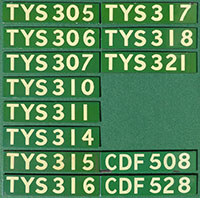
The enamel plates measured approx. 9x2 inches. CAT was Cardiff Cathays, RDG was Reading, SHL was Southall. Other codes used were CDF (Cardiff Canton), BL (Bristol) and TYS (Tyseley). The number series for suburban sets was 3xx (116s) and 4xx (117/8s), and Cross-Country sets were in the 5xx series. The Cathays, Reading and Southall plate images are courtesy of James Hyde and Simeon Gaskell.

The empty clips can be seen in the image of W50100, which is also carrying a cast shed plate (84E / Tyseley).
The Western Region seemed to keep thier vehicle together in their set formations more religiously than other Regions. Some depots elsewhere seemed to change the formations almost daily, whether they carried set numbers or not.
The plates were carried on Cardiff sets into the blue era until at least 1970 as this image shows.
Window Boards

In mid-1962 set numbers started appearing in the left cab window of the Tyseley sets instead of the solebar plates. These were much easier to see, and were black numbers on a white board.
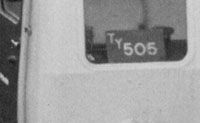
These would continue in many forms over the years, and the next image shows a later type from Tyseley (now a LMR depot), the two letter depot codes were added in 1969. These boards were never permanently fixed, being held in place by clips.
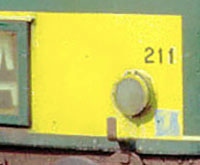
Scottish Region 1960s
The ScR assigned set numbers in 1966. It seems to be first application to be marked onto the cab front, the numbers being applied by stencil.
In time these were applied with black stickers instead using the same number series.

Eastern Region
In November 1971 Norwich depot applied set numbers to its fleet, these were first fixed to the top of the cab windows. This article on the Birmingham Railcar Workgroup website looks at the introduction of these.
North Eastern Region
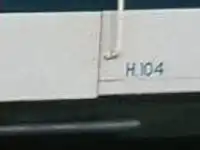
Circa 1973 set numbers were applied to the sets allocated to former North Eastern depots - they have been merged into the Eastern Region in 1967. The numbers were painted on the lower bodyside beside the cab door, or on the solebars, and were also applied to centre cars. Area codes were used rather than depot codes: H for Hull, L for Leeds and N for Newcastle, although H may have also referred to Heaton, the image shows set number H104 on E56087 at Newcastle on 31 August 1978 which was allocated to Heaton at the time.
Prefixes
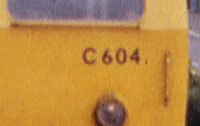
When the set numbers were applied to the cab front of Western Region sets in the blue livery period, they carried a prefix denoting their operating region: L - London; C - Cardiff; P - Plymouth; and B - Bristol. At first these stickers were in a Gill Sans font (the font used for labelling in green livery) even though Rail Alphabet was now the norm for blue livery. Later on LMR sets would also adopt the prefix system, using either one or two letters, and denoted the depot of allocation rather than the operating region.
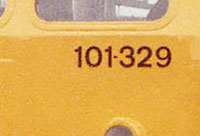
Class numbers
In 1981 ScR sets began carrying set numbers which also denoted the class of the set. The following number series was the first used (often the same final three digits as the set was already carrying): 101 3xx; 105 34x-37x; 107 43x/44x; 116 38x/39x and 126 4xx. Class 122 55002 was carrying set number 101.
Later years
Network South East sets continued to use the WR single letter prefixes where set numbers were carried. Regional Railways sets would carry class prefixes. Departmental stock would also be allocated set numbers, in the 960 xxx series.
Listings
The following pages provide a sample of the set formations to be found over the years.
Introduction
East Anglia 12/85
East Anglia Summer 1986
LMR Summer 1986
Buxton 108s 1988/9
Chester 1989
Tyseley 117/118s
Tyseley 1988
Set T511
Set TS355/TS702
Edinburgh Visitors
ScR February 1981
ScR Summer 1986
ScR August 1986
Scotland 1988
South Wales 1987
Western Region
WR December 1982
WR Summer 1986
NSE November 1992
NSE November 1993
Regional Railways Nov. 1992
Regional Railways Nov. 1993


